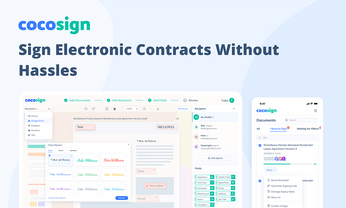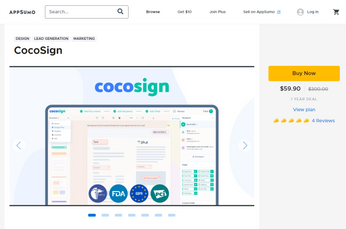Effective Email Design Tips for Better Engagement
Imagine opening your inbox and being greeted by a flood of emails. Which ones do you open? Most likely, the emails catch your eye with compelling design and clear messaging. In email marketing, where first impressions are crucial, effective email design is the key to standing out.
Email marketing is one of the main parts of digital marketing strategies for businesses of all sizes. It allows companies to directly communicate with their audience, deliver personalized messages, and build lasting relationships. From promotional campaigns, gift cards and newsletters to transactional updates and customer surveys, email marketing offers a versatile platform to reach and engage with customers.
The Impact of Design on Engagement
Effective email design goes beyond aesthetics; creating an experience encourages interaction and drives results. A well-designed email captures attention, communicates the message clearly, and guides the reader towards a specific action. Professional marketers rely on tool for ads designers to create compelling visuals that drive engagement and conversions.
"Businesses need to cut through so much noise in boxes and somehow engage their target audience. We've seen firsthand how well-designed emails can significantly boost open rates, click-throughs, and ultimately drive more conversions and sign-ups for our job management platform." Draven McConville, CEO at Klipboard.
Whether it's making a purchase, registering for an event, or simply clicking through to a website, the design elements play a crucial role in influencing recipient behavior. Even a simple greeting email template, if designed effectively, can set the tone for ongoing engagement and customer loyalty. Engagement rates like open, click-through, and conversions can improve by using key design principles and integrating slides design to structure visual information effectively.
Engagement rates such as open, click-through and conversion rates can be significantly improved by focusing on key design principles.
Understanding Your Audience
To design effective emails, it's crucial to understand your audience. Knowing your recipients' preferences and behaviors helps you personalize your email content to meet their needs and interests.
Additionally, incorporating white label marketing services can further enhance your email campaigns, allowing you to leverage expert strategies and solutions under your brand, ensuring a seamless and professional experience for your clients.
For more insights on efficient email outreach, consider using the AI Cold Email Generator to quickly craft personalized cold emails that kickstart conversations and save you time.
Identifying Your Target Audience
Start by gathering data using email marketing software on your audience through surveys, analytics, and feedback. Identify key demographics such as age, gender, location, and buying habits. For professional audiences, you might want to send an email with certificates to highlight your expertise and build trust.
Segmenting Your Email List
Segment your email list based on these characteristics to send more personalized and relevant content. Segmentation can be based on factors like purchase history, engagement level, or preferences. To protect your segmented lists and ensure emails reach the inbox, using a DMARC record checker is crucial for verifying your domain.
Creating Compelling Subject Lines
The Role of Subject Lines
Subject lines are the first impression your email makes, playing a crucial role in determining whether it gets opened or ignored. An effective subject line can significantly improve open rates and overall engagement. It's essential to invest time in creating subject lines that grab attention and entice recipients to read more.
Tips for Writing Effective Subject Lines
- Keeping it Short and Clear
- Aim for conciseness to ensure your message is easily readable, even on mobile devices. Subject lines that are too long may get cut off, reducing their impact.
- Example: "Limited Time Offer: 50% Off Sale" vs. "Don't Miss Out on Our Exclusive Sale Happening Now!"
- Using Personalization
- A thoughtful approach to personalization goes beyond the content itself. You can improve your email’s professionalism by using tools to create an email signature that reflects your brand identity, making your message more memorable and trustworthy.
- Including the recipient's name or other personalized information can make the email feel more relevant and increase the likelihood of it being opened.
- Example: "John, Your Exclusive Discount Awaits!" vs. "Exclusive Discount Inside!"
- Creating a Sense of Urgency
- Phrases like "limited time offer" or "act now" can encourage immediate action. Highlighting time-sensitive deals can prompt quicker responses.
- Example: "Last Chance: Sale Ends Tonight" vs. "Ongoing Sale"
- A/B Testing for Optimization
- Test different subject lines to see which ones perform better and refine your approach based on the results. A/B testing allows you to understand what resonates most with your audience.
- Example: Comparing "Flash Sale: 24 Hours Only!" with "Get 20% Off Today Only" to determine which drives higher open rates.
Designing the Email Layout
Structure and Organization
A clean and organized layout is crucial for effective email design. It ensures that the content is easily digestible and guides the reader's eye smoothly through the email.
Importance of a Clean and Organized Layout
A well-structured email layout enhances readability and helps convey the message. This is particularly important when promoting complex products or services, such as payroll software, where clarity and ease of understanding can significantly influence the recipient's decision.
Best Practices for Layout Design
- Consistent Structure - Use consistent headings, fonts, and colors to create a cohesive look.
- Visual Hierarchy - Prioritize important information with larger fonts or bolder colors. As AI fonts continue to evolve, they’re becoming a go-to tool for creating modern, dynamic type systems with minimal effort.
- Whitespace - Take advantage of whitespace to avoid clutter and make the email more readable.
- When designing layouts, consider how a logo fits into the overall structure. Use tools like a logo creator to create a design that complements the layout's aesthetic while maintaining visual balance and brand consistency.
Responsive Design
Ensuring your emails are compatible across all devices (mobile, tablet, desktop) is essential for maximizing engagement.
Ensuring Compatibility Across Devices
Emails should be designed to adapt seamlessly to various screen sizes, ensuring they look great and function well on any device.
Using Responsive Design Techniques
- Fluid Grids and Flexible Images - Use fluid grids and flexible images, expanding photo dimensions as needed to adjust based on the screen size.
- Media Queries - Implement media queries in your CSS to apply different styles based on the device characteristics.
- Testing Across Devices - Test your email layouts on multiple devices to ensure consistent performance and appearance.
Visual Elements
Using Images and Graphics
Visual elements in emails significantly enhance engagement by making the content more attractive and encouraging recipients to read further. They improve comprehension by quickly and clearly explaining complex ideas. Additionally, images break up long text blocks, making the email more visually appealing.
To effectively use images, choose ones that are relevant to your message and of high resolution to ensure clarity and professionalism. Utilizing an AI image enhancer can help improve the quality of your images, making them even more impactful and visually appealing.
Always include descriptive alt text for accessibility. Visual inspiration from current design trends can help elevate your email content and keep it fresh.
Incorporating Videos
Videos can dramatically increase click-through rates as they are more engaging than static images or text. They also help convey messages more effectively, aiding in retention. Companies often prefer to collaborate with a video production startup, or turn to more budget-friendly AI video editing to help them create these videos and use them in their email marketing strategies.
For best practices, use clickable thumbnails that link to the video instead of embedding it directly. Keep videos short to increase the likelihood of them being watched fully, and ensure each video includes a clear call to action. Additionally, consider how you can repurpose video content across different platforms to maximize its impact and reach. To boost engagement even further use an SPF generator when sharing links, as recipients might initially find these emails suspicious and they might land in spam folders.
Consistency with Branding
Maintaining a consistent brand identity in your emails strengthens brand recognition and trust. Use your brand's color palette consistently, stick to your brand's fonts, and always include your company (logo design) in a prominent position.
To maintain brand consistency, consider utilizing logo templates to streamline the design process. Make sure you also share tech-enabled business cards with the new leads to create solid distinction of your brand right at the start.
Include the branding elements like logo in your email signature to enhance your branding efforts and reach. This consistency helps create visually appealing emails that enhance engagement and reinforce your brand identity.
Effective email design is essential for capturing attention, enhancing engagement, and driving desired actions from your audience. Implementing these strategies will help you build stronger connections with your recipients and improve the overall performance of your email marketing campaigns.





